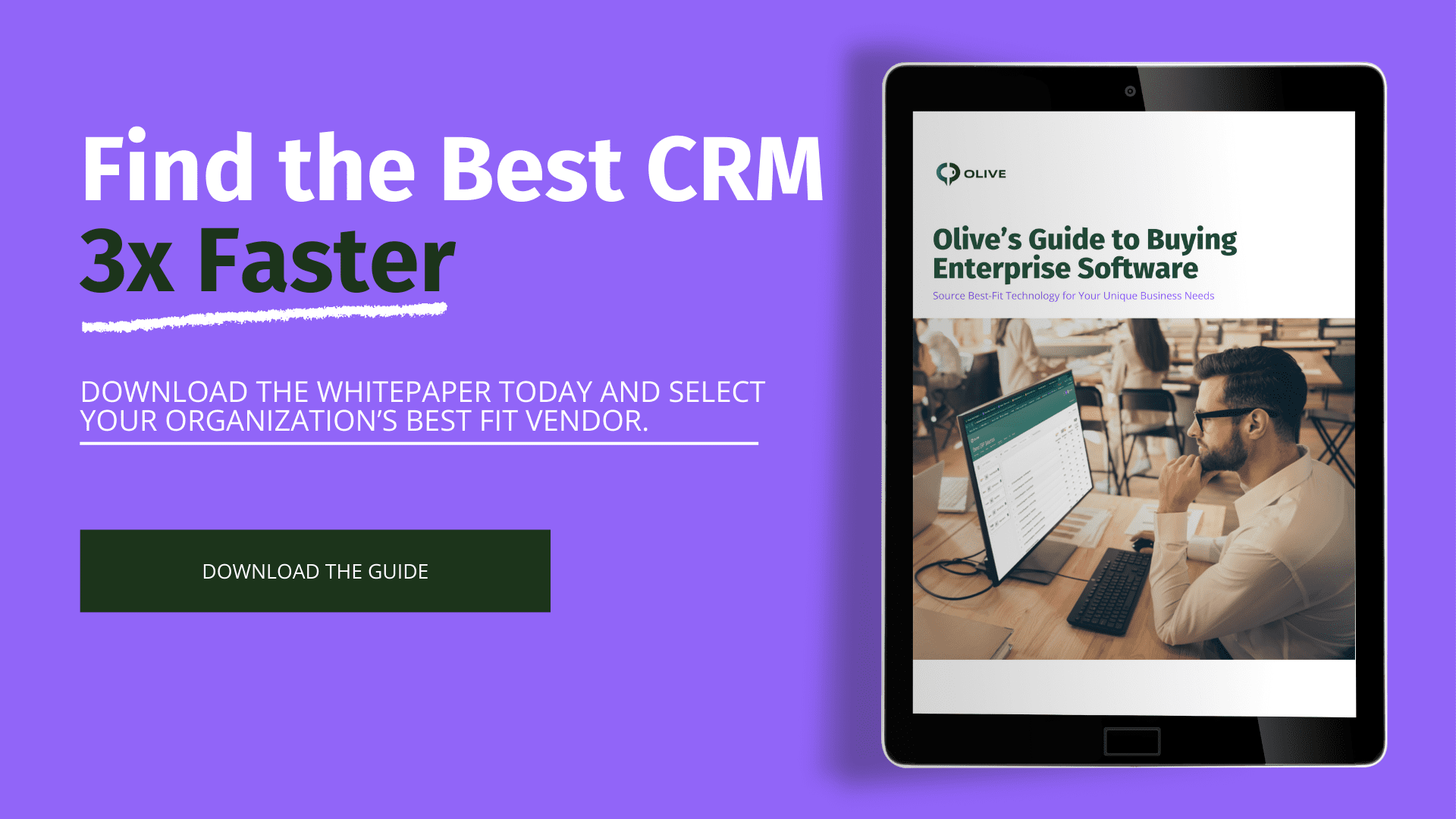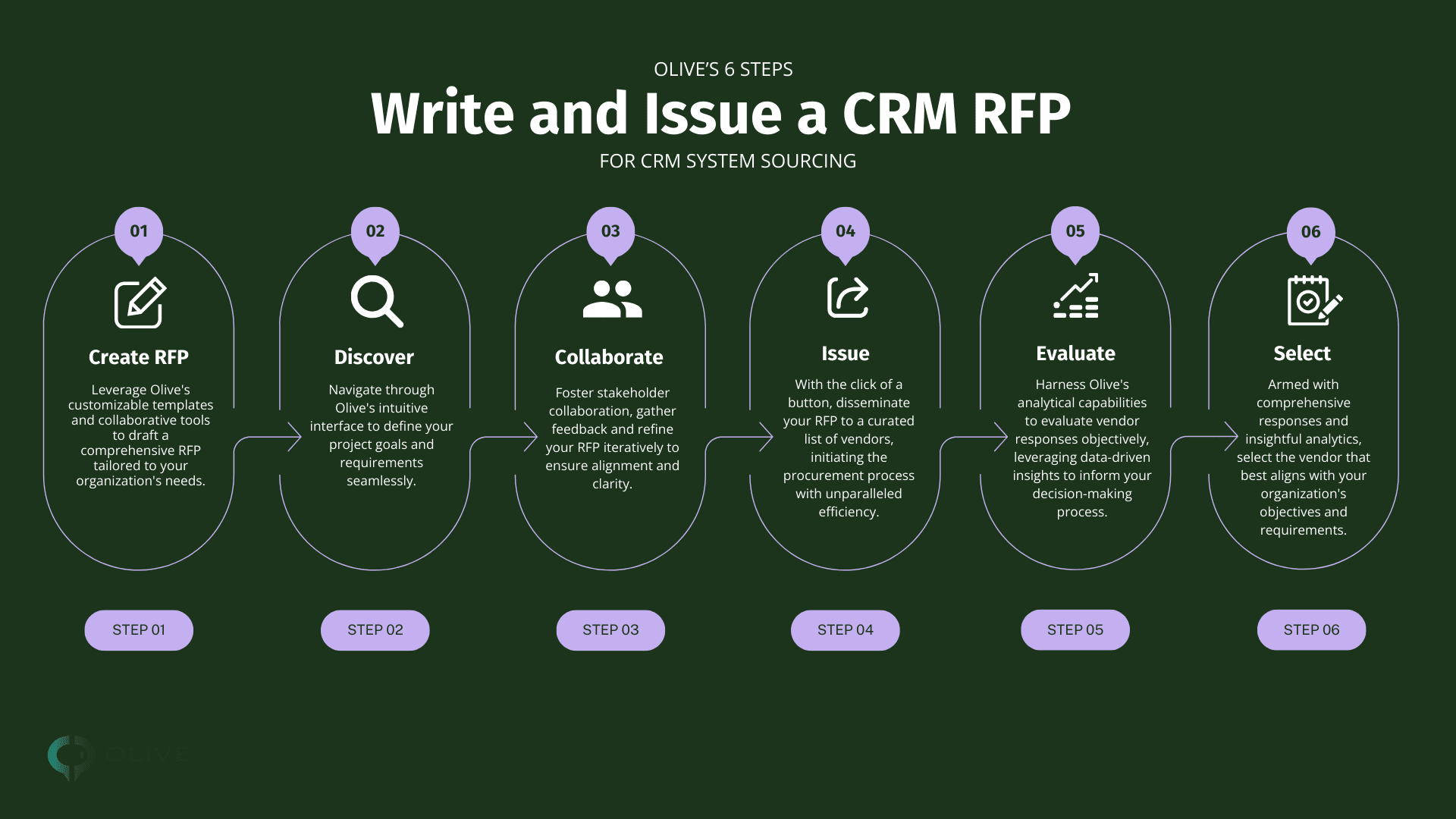Choose the Best Customer Relationship Management System in 2024
What is the Best CRM?
The ‘best CRM’ is the one that meets the specific needs of your business. It’s not necessarily the highest-reviewed system on G2 or Gartner, nor the best-known CRM. Identifying the best CRM for your business needs is traditionally a slow and manual process. Unless you conduct a thorough evaluation, you will not understand which CRM system is best for your unique business needs. If that is something you want to understand, read on.
According to Gartner, CRM implementation failure rates can exceed 50%.
A failed CRM implementation is a CIO’s worst nightmare. The risks are incredible. Famous failures often stem from biases towards vendors and outdated processes. Refusal to innovate and accept the spreadsheet-driven status quo opens your organization up to risks. Whether you are buying a CRM system for sales, marketing, customer service, or other functions, finding the right vendor can be daunting, especially when multiple stakeholders are involved. Here, we will explain how to find the best CRM for your business with ease.
What Is Customer Relationship Management (CRM) Software?
CRM systems help businesses manage a range of business functions such as sales, marketing, customer service, and support. Your company’s needs should dictate your selection. Many companies underestimate the necessary process of doing their due diligence in choosing the right CRM system. Organizations often settle for a less-than-perfect option, working around the system’s shortcomings. When the perfect match is made, the solution should be a positive force for business transformation and give your organization a critical competitive edge.
CRM Trends for 2024
The Evolution of CRM
CRM systems are evolving to include more advanced features like AI-driven analytics, automation, and integrations with various business tools. Big vendors like Salesforce and HubSpot continue to innovate, but new players are entering the CRM vendor space with specialized applications and microservices that sit on top of and integrate with CRM platforms. Adopting cloud-based solutions helps companies stay ahead. According to Deloitte:
“As cloud becomes the norm for CRM, applications and microservices will proliferate, allowing businesses to reduce the complexity and cost of technology without sacrificing functionality.”
7 Steps to Choosing the Best CRM Vendor in 2024
1. Determine a Business Case for the System
Research and define your current business processes, pain points, and strengths. Think ahead and consider what processes in your organization will look like in the future. What is the reason a new solution is needed? What are the problems a new CRM will solve? This work will help you outline requirements later and ensure you are solving the right problem with a CRM system.
2. Identify and Collaborate with Key Stakeholders to Gather Requirements
Identify the key stakeholders who need to contribute to the CRM evaluation requirements. Finding a CRM system that works for the organization requires collaboration with these key players to ensure high user adoption later. Skipping this step may cause you to miss a key requirement or functionality that key departments need.
3. Collaborate with Key Stakeholders to Define and Rank Your Requirements and Evaluation Criteria
Understanding your business needs is crucial in selecting the right system. Ensure that identifying these needs (in the form of requirements) is a collaborative process between critical decision-makers. Consider your current business processes and how a new CRM system could improve them.
Key Considerations for CRM Requirements
- What are your business goals for the next year?
- What areas of the business are growing, and what areas are shrinking?
- How could the right vendor benefit your company?
- Do you have the right budget for your needs?
- What does a successful implementation look like for your business?
Must-Have CRM Requirements
When you and your team are clear on what your business needs, define and rank your must-have requirements list, including:
- Cost
- Functional requirements
- Security
- Integrations with current enterprise software infrastructure
Nice-to-Have CRM Requirements
When you have defined your must-haves, you can look at your nice-to-have requirements. This may include:
- User experience
- Mobile platform
- Customization options
4. Ensure Software Integrates with Existing Infrastructure
Identify any existing infrastructure that must integrate with the CRM. Ensuring that your chosen solution integrates with existing software will improve the customer experience by increasing your understanding of your business.
5. Explore the Available Options
With clearly defined needs, features, and integrations, look at the long list of vendors and narrow it down to a shortlist of solutions. Use unbiased sources like Olive to avoid biased vendor recommendations.
6. Evaluate Vendors
With a shortlist of 3-5 vendors, ask for use case examples and product demonstrations. Form a team of solution testers to get feedback on the shortlisted vendors.
7. Make the Best Choice for Your Business Needs
Ensure that the final decision is based on your business’s needs and goals, without bias, with input from various stakeholders.
CRM RFP: Streamline Your Selection Process
Writing a CRM Request for Proposal (RFP) can significantly streamline your selection process. It helps you articulate your requirements clearly and allows vendors to provide tailored solutions that meet your specific needs.
Key Elements of a CRM RFP
- Detailed description of requirements
- Clear instructions for vendors
- Transparent selection criteria
- Realistic timelines
Olive’s Approach to Building and Issuing a CRM RFP
At Olive, we simplify the CRM RFP writing process, leveraging cutting-edge technology and intuitive design to help organizations find the best CRM solutions. Our platform allows you to:
- Launch Olive’s CRM RFP Template: Use customizable templates to draft a comprehensive CRM RFP.
- Discover Requirements with AI: Define your project goals and requirements seamlessly.
- Collaborate with Stakeholders: Gather feedback and refine your CRM RFP iteratively.
- Issue the RFP: Disseminate your CRM RFP to vendors efficiently.
- Evaluate Vendor Responses: Use data-driven insights to inform your decision-making process.
- Select the Best Vendor: Choose the CRM vendor that best aligns with your organization’s objectives and requirements.

Source the Best CRM for Your Business Needs in 2024
Sourcing the best CRM system can help businesses achieve goals, improve competitive position, and increase profitability. Avoid relying on biased opinions and incentivized reviews. With Olive, you can de-risk your decision and make the right choice for your organization.
Olive’s CRM RFP Template
Our pre-designed RFP template includes sections for defining project objectives, describing requirements, outlining selection criteria, and specifying timelines. It streamlines the RFP writing process and ensures consistency across different RFPs.
Launch Your Search for the Best CRM with Olive’s CRM RFP Template
Kick-off your organization’s evaluation with Olive’s pre-created RFP template. Our template is designed to simplify the process, saving you time and ensuring thoroughness. It comes pre-loaded with discovery surveys, standard requirements, user feedback, a list of vendors, and vendor responses to requirements.
In Olive, vendor scores are automatically calculated. Compare vendors side by side based on specific requirements. Dynamic auto calculations ensure that scores continuously update as stakeholders evaluate vendor responses. The platform also offers the flexibility to assign different weights to various sections or departments when calculating vendor scores. This data-driven approach enables unbiased decision-making, free from any bias.
Ready to find the best CRM solution for your organization? Take the time to do it right, check out Olive’s CRM RFP template by signing up for a 14-day free trial. For more expert guidance, download Olive’s Guide to Buying Enterprise Software.







